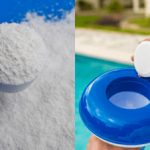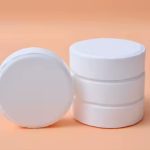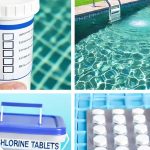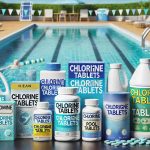Do you use chlorine tablets to keep your pool crystal clear but worry about the risks they might pose when they expire or need disposal? You’re not alone! Chlorine tablets are a popular choice for maintaining pool hygiene but handling them can be tricky due to their chemical nature. In this blog, we’ll dive into how to neutralize chlorine tablets safely, ensuring you protect both your health and the environment.
Ⅰ.What are Chlorine Tablets?
Chlorine tablets are small, potent sources of chlorine, primarily made up of trichloroisocyanuric acid. These tablets dissolve slowly in water, releasing chlorine gradually to kill bacteria and algae, keeping your pool water sparkling clean and safe. They are a staple in both residential and commercial pool maintenance kits but require careful handling due to their reactive properties.
Ⅱ.Why Neutralize Chlorine Tablets
1.Prevention of Chlorine Gas Release:
Chemical Reaction with Water: Chlorine tablets are designed to release chlorine gas when in contact with water. This chemical reaction is beneficial in pool water but dangerous if it occurs unexpectedly, such as if tablets are improperly discarded and come into contact with moisture in trash or the environment.
Reaction with Acids: If chlorine tablets come into contact with acidic substances, they can react violently, releasing large amounts of chlorine gas quickly. This gas is toxic and can cause respiratory problems, throat irritation, and even severe pulmonary issues if inhaled in large quantities.
2.Environmental Protection:
Water Contamination: Chlorine tablets that end up in natural water bodies can drastically alter the chemical balance of the ecosystems. The chlorine released can be lethal to aquatic life, destroying habitats and killing fish and plants.
Soil Contamination: If disposed of in landfills without proper neutralization, chlorine from the tablets can leach into the soil. This not only changes the pH of the soil, making it unfit for plant growth, but can also contaminate groundwater sources, posing risks to wildlife and potentially affecting human water supplies.
3.Health Risks to Wildlife and Humans:
Toxicity to Wildlife: Animals that come into contact with high levels of chlorine, either through contaminated water or directly by ingesting contaminated soil or water, can suffer from chlorine poisoning. Symptoms in wildlife include difficulty breathing, compromised immune systems, and increased mortality rates.
Risks to Human Health: Humans exposed to excessive chlorine, either through direct contact or by consuming contaminated water, can experience severe health issues. These include skin irritation, respiratory problems, and in extreme cases, long-term effects such as organ damage.
Ⅲ.How to Neutralize Chlorine Tablets
1.Prepare the Neutralizing Solution:
Materials Needed: Gather sodium thiosulfate, a large bucket or container, water, and a stirring instrument.
Mixing the Solution: In a well-ventilated area or outdoors, mix sodium thiosulfate with water in the bucket or container. Follow the manufacturer’s guidelines for the correct ratio of sodium thiosulfate to water to ensure an effective neutralization process.
2.Adding the Chlorine Tablets:
Safety Precautions: Wear gloves and safety goggles to protect your skin and eyes. Avoid inhaling any dust from the chlorine tablets.
Process: Slowly add the chlorine tablets to the prepared solution, making sure each tablet is fully submerged. The sodium thiosulfate will interact with the chlorine in the tablets, breaking down the chlorine molecules and neutralizing their reactive properties.
3.Stirring and Monitoring the Reaction:
Ensure Complete Neutralization: Gently stir the solution to ensure that the sodium thiosulfate fully interacts with the chlorine tablets. Keep an eye on the reaction; you should notice a decrease in any effervescence or gas release as the reaction proceeds.
Completion: Once the reaction has ceased and no more gas appears to be released, the chlorine is effectively neutralized.
Ⅳ.Conclusion
Understanding how to correctly neutralize chlorine tablets is essential for maintaining both safety and environmental health. This guide has outlined the necessary steps to safely handle and neutralize chlorine, preventing harmful reactions and minimizing ecological damage. By implementing these practices, you can ensure that your pool remains a safe and enjoyable environment, and that you are responsibly contributing to environmental protection.





